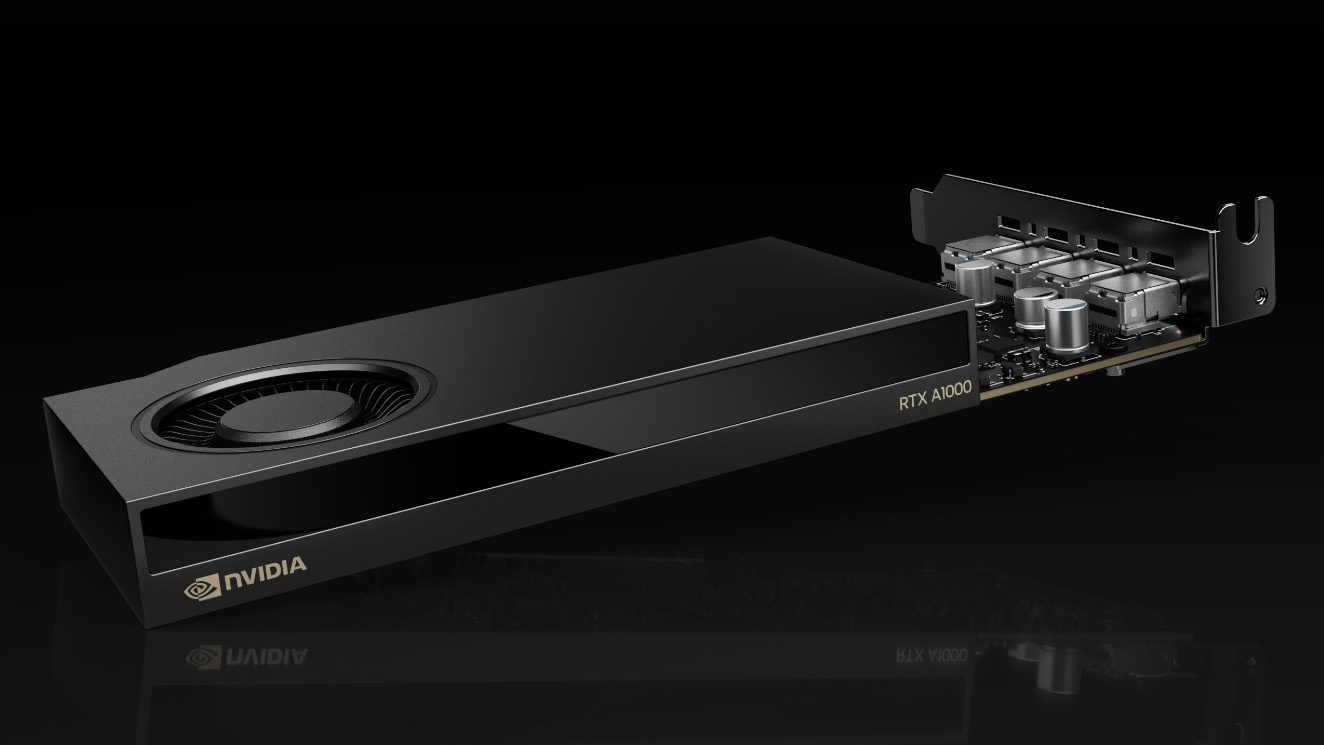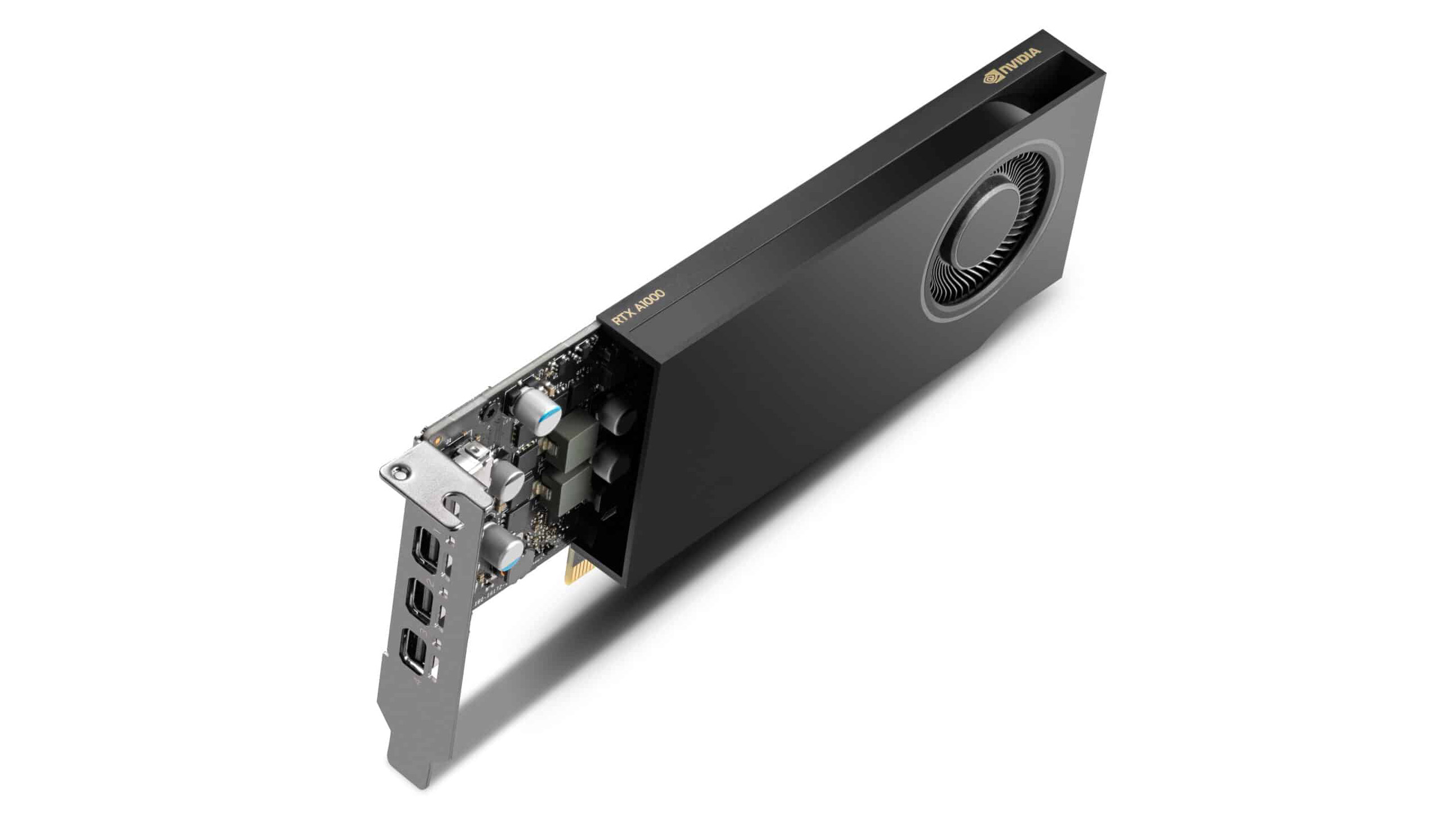
Nvidia has shaken the cob webs off its Ampere GPU architecture by announcing two brand-new professional GPUs based on its previous-generation architecture. The RTX A1000 and A400 target the entry-level professional market, with specifications that boasting GPU specifications that are either similar or far worse than the consumer-grade RTX 3050. These won't likely be the best graphics cards, even for professionals, but they'll probably fill a very specific niche.
The two new GPUs fill out the bottom of Nvidia's professional RTX product stack. The RTX A400 and RTX A1000 come with super small half-height, single-slot blower-style coolers and a 50W TBP (Total Board Power) rating. No external power connectors are required. But while the TBPs might be the same, under the hood there are some pretty massive differences.

The A1000 is the most comparable to the RTX 3050, featuring 2,304 CUDA cores (the same as the 3050 6GB), 72 Tensor cores, 18 RT cores, and 8GB of GDDR6 memory operating on a 128-bit bus (192GB/s of bandwidth). It's basically the same GPU as the later RTX 3050 8GB variant that used GA107 rather than the initial GA106.
Single-precision FP32 performance is rated at 6.7 TFLOPS, RT performance is 13.2 TFLOPs, with 53.8 TFLOPS of FP16 performance from the Tensor cores. All of those figures are quite a bit lower than the RTX 3050, but that's because the GPU is limited to 50W, where the 3050 GA107 was a 115W part. The A1000 also comes with one video encoder and two video decoders, but the encoder is a generation older meaning it does not have AV1 encode support (but the card can decode AV1 video).
Despite its low profile nature, the A1000 supports an impressive four displays through its quadruple mini-DP connectors. The maximum resolution each connection supports is the "professional version" of 4K, or 4096x2160 at 120Hz. Alternatively, the maximum resolution can be shifted to 5120x2880 or 7680x4320 (8K), if you're willing to lower the refresh rate down to 60Hz and 30Hz respectively — note that DSC (Display Stream Compression) would allow for higher refresh rates in all cases, provided the monitor supports it.
The RTX A1000 looks like a reasonable entry-level professional part, albeit arriving rather late to the party. The RTX A400 on the other hand gets seriously chopped when it comes to raw specs. Nvidia hasn't listed prices, but we can only assume the A400 is expected to be (relatively) dirt cheap.
The RTX A400 has just six SMs, with 768 CUDA cores, 24 tensor cores, 6 RT cores, and 4GB of GDDR6 memory operating on a 64-bit bus (96GB/s). Performance is rated at just 2.7 TFLOPs of single-precision compute, 5.4 TFLOPS of performance for the RT cores, and 21.7 TFLOPs of performance for the Tensor cores — less than half of the A1000 in all cases.
The main draw is that, despite its weaker GPU configuration, the A400 sports the same quadruple mini-DisplayPort connections as the A1000, with the same peak resolutions (though strangely Nvidia does not list 8K support for the A400). It does however only have a single video decoder. We confirmed with Nvidia that the A400 still uses an AD107 chip, just with substantial portions of the chip turned off, likely due to binning and the targeted market. We suspect that, in practice, power use on the A400 will also be less than the rated 50W, since it has half the memory and one third the shader cores of the A1000.
The A1000 should function decently as an entry-level professional GPU for those who need such a thing. The raw specs are virtually identical to the RTX 3050 6GB, with 18 SMs, except with an extra 2GB of memory. The A400 on the other hand seems like a hypothetical "RTX 3030," though Nvidia never made such a card. It's also the first RTX GPU we've ever seen to come with a single-digit core count for the SMs and RT cores.
It hopefully goes without saying that both GPUs target entry-level professional workloads. These GPUs are optimized for businesses and professionals who don't need a lot of GPU horsepower but still require features that are only accessible through Nvidia's RTX Enterprise-grade drivers. The A1000 and A400 are also the smallest and lowest-powered RTX GPUs to date, Ampere or otherwise — basically like restricting a desktop card to laptop power levels, which should make them optimal GPU upgrades for low-profile machines.
Pricing was not announced as these cards are normally only available through Nvidia's professional partners. By way of comparison, the beefier RTX A2000 costs $496, with 6GB of memory on a 192-bit bus and 26 SMs, plus a dual-slot blower. Given the lack of other (Nvidia) alternatives, we expect the A400 and A1000 to be priced much higher than what their specs would otherwise suggest, similar to Nvidia's outgoing RTX A-series professional GPUs. Over two years late and much more than a dollar short, in other words.







